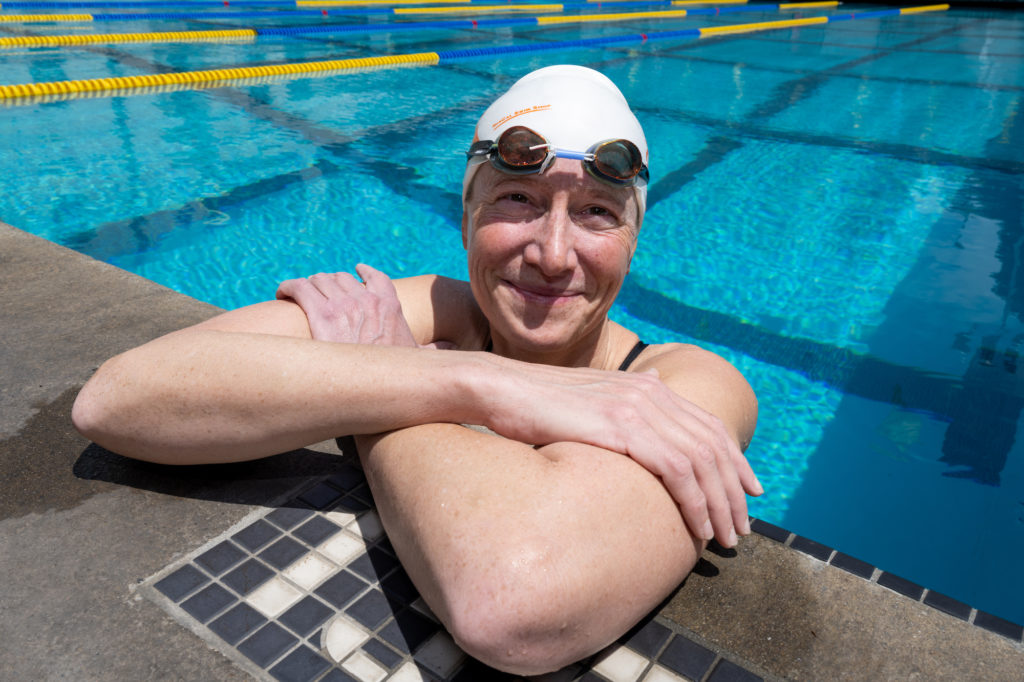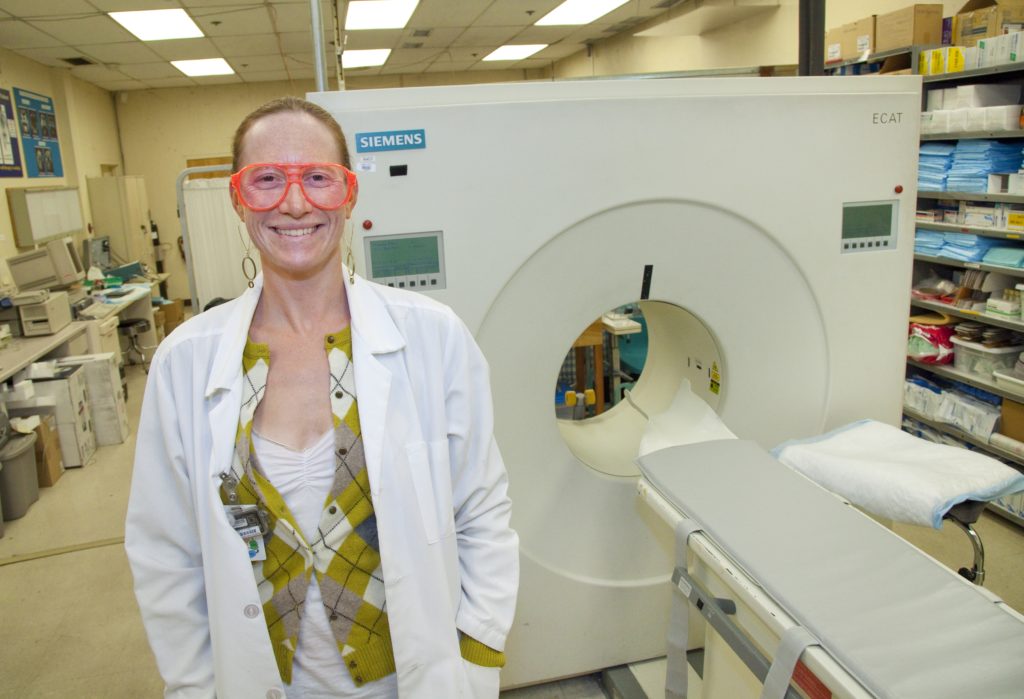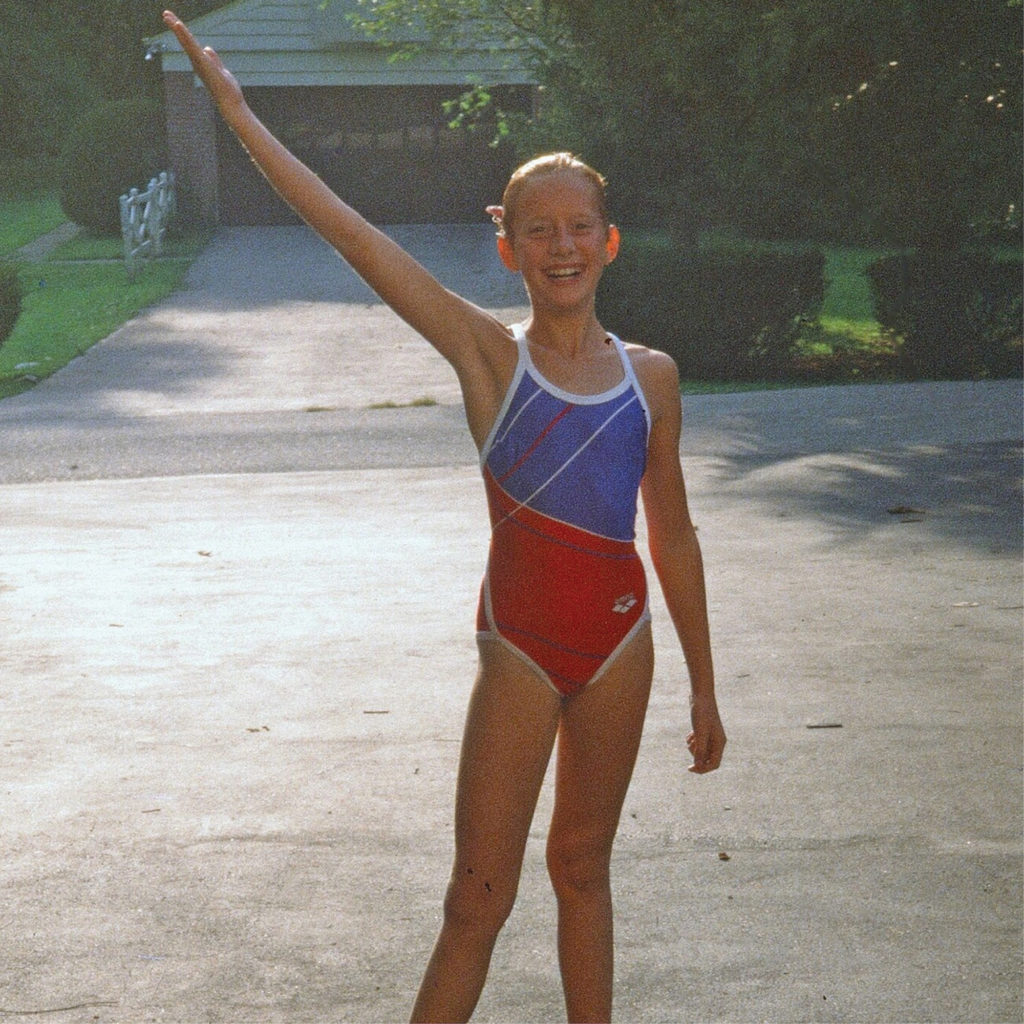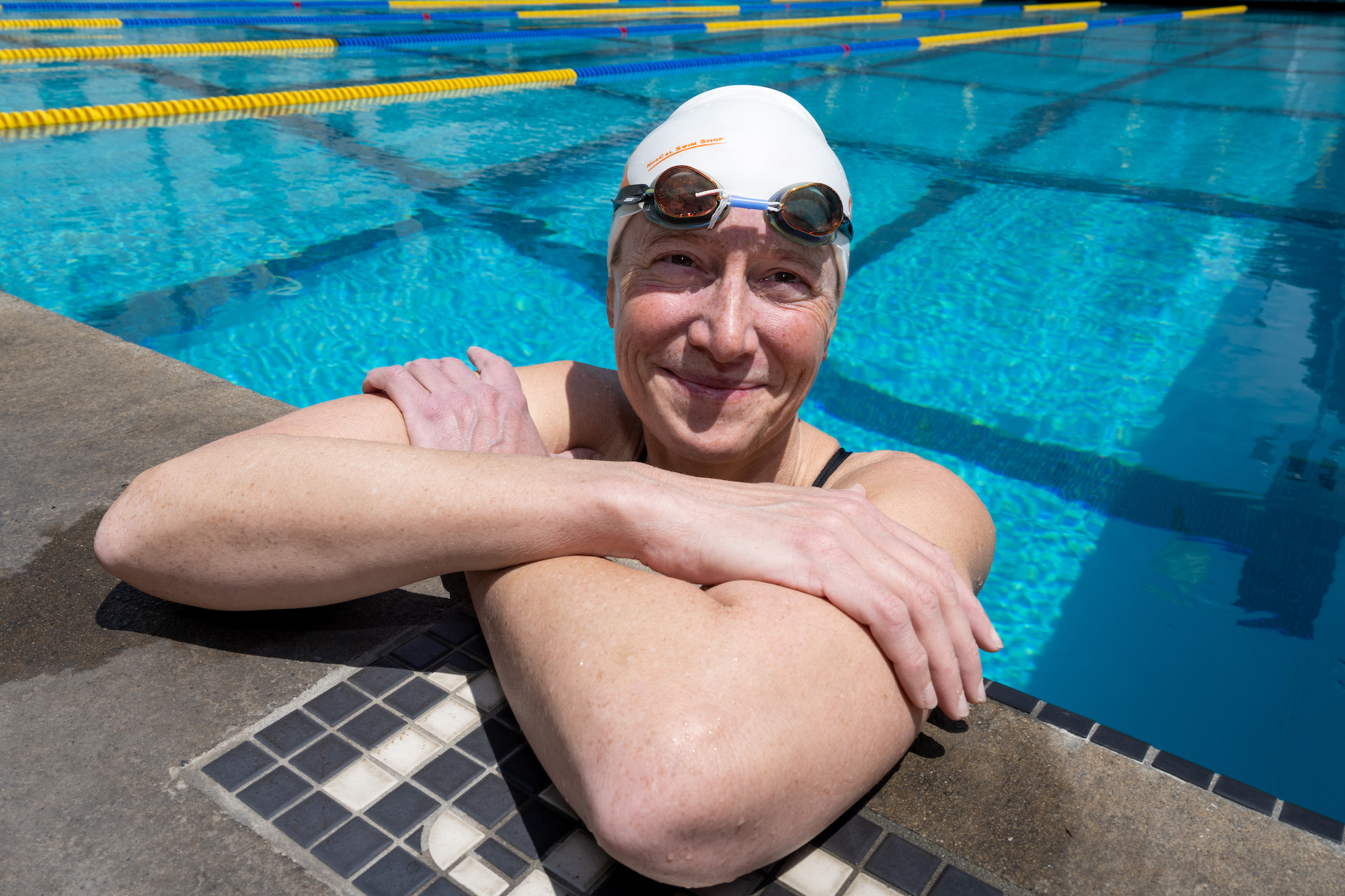When Suzanne Baker was interviewing as a senior research associate at Berkeley Lab, one of the members of the hiring committee asked her if she had any questions for them. Baker asked if she could repurpose her daily lunch breaks to go swimming. Her soon-to-be-supervisor responded encouragingly. “Swimming, for me, is something that I really do have to do everyday.”
After nearly 20 years at Berkeley Lab, Baker continues to spend her midday breaks at a nearby lap pool. She maintains that these water workouts help her stay focused and productive in her role as a computational staff scientist in the Molecular Biophysics and Integrated Bioimaging (MBIB) Division. Baker is part of a team that’s working toward mapping and understanding how the development of Alzheimer disease (AD) changes the brain.


The Right Place at the Right Time
According to Baker, her path to the MBIB team has been a “weird journey” punctuated with influential mentors and serendipitously timed advancements in the field. After studying biomedical engineering in Louisiana, graduate school brought Baker to UC Berkeley where she learned how to integrate emerging tools like functional magnetic resonance imaging (fMRI) with existing technologies like the electroencephalogram (EEG) to measure brain activity.
fMRI reveals images of brain activity by showing the change in blood flow based on neurons firing. Although her time as a graduate student introduced her to brain imaging tools, Baker ultimately grew fatigued with the work and lost interest. “I was also a bit immature,” she admitted. “I decided against pursuing EEG—I felt like that wasn’t the future.”
About 10 years ago, as Baker was beginning to establish herself in the field of neuroscience, imaging technologies and computer-generated models were rapidly advancing. During her time as a postdoc in the UC Berkeley neuroscience department, Baker chipped away at an application for a National Institutes of Health (NIH) grant to improve quantification of fMRI data.
The grant wasn’t funded and Baker was left with an uncertain future. A labmate had recently accepted a position at Berkeley Lab and offered to introduce Baker to Bill Jagust, then a recently-hired faculty scientist. Jagust was working to build out his team and Baker got excited at the prospect of working together. “I essentially pitched myself as being a smart person with an engineering background who wants to be part of a team and make the science work in a lab,” she said.
In 2005, Baker joined MBIB, then the Life Sciences Division, and quickly jumped into the arena of emerging imaging technologies. She worked alongside “amazing scientists” who helped get her interested in the idea of optimizing positron emission tomography (PET) imaging quantification. A broad technique that reveals metabolic activity, PET uses mildly radioactive tracers to map blood flow and chemical changes in the brain.

Baker soon began focusing her work more specifically on amyloid PET imaging, a tool that, at that time, had just been developed. Amyloid plaques are misfolded proteins that stick together in between nerve cells in the brain and play a central role in the development of AD. An engineer at heart, Baker enjoyed the opportunities to tinker and fix the team’s old PET scanner, trying to understand and help to build better tools for diagnosing disease.
“It was a really, really exciting time to join the field of neuroimaging and aging in AD research,” she said. “And it’s just gotten more exciting.”
Streamlined
More recently, Baker’s work has expanded to also include the detection of tau proteins in living brains. Normally, tau forms part of the tube-shaped structures that give neurons internal stability and transport nutrients, among other things. But sometimes, tau doesn’t work the way it’s supposed to and instead can lead to traffic jams in the neural circuitry leading to cell death and eventual cognitive impairment.
“AD is defined by the accumulation of amyloid and tau,” Baker said. As imaging techniques and technologies have expanded to offer a more precise glimpse into the brain’s activity and traffic reports, Baker is now fine-tuning the analysis of radioactive tracers to help pinpoint problem areas. All the while, she’s also considering how to adapt the complicated models into scalable equations that doctors and hospitals can actually use. Earlier this year, Baker and a colleague at the University of Pittsburgh’s department of psychiatry were awarded a $40 million grant from the NIH to dive into this work and better understand the strengths and weaknesses of two different tau protein tracers.
Getting into the water
Throughout her career explorations and developments, Baker continually sought refuge and inspiration in the water. Growing up on the East Coast, she remembers visiting Cape Cod with family and toddling into the nearby surf. “I was barely able to walk and a wave would topple me over. One of my parents would come and pull me out, and once I calmed down, I’d be right back in the water again,” she said. “It’s just what I need in my life.”


Baker spent the majority of her younger years on professional-level synchronized swimming teams. In 2003, she was asked to coach a local LGBTQ+ “synchro” team. While it wasn’t something that she saw herself doing long term, she accepted the opportunity to inspire a new audience to fall in love with the benefits of swimming.
As the team’s interest in the sport grew, so too did Baker’s involvement as a coach. Nearly twenty years later, the team has traveled around the world for competitions and Baker enjoys bringing both of her passions—swimming and neuroscience—to the pool.
“Sometimes, they get annoyed when I change choreography that is already in their muscle memory and I like say to them, ‘you’ll thank me when you don’t get AD.’” ⬢
Written by Ashleigh Papp, a communications specialist for Berkeley Lab’s Biosciences Area.
Read other profiles in the Behind the Breakthroughs series.




